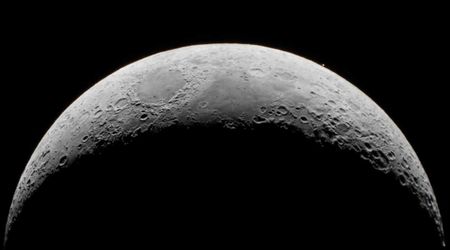In July night sky this week, watch the Moon gliding by Sagittarius' Teapot and the Galactic Center

Stargazers are in for a treat this week as the Moon makes a prominent pass through the constellation Sagittarius, offering a unique, albeit fleeting, celestial alignment with the Milky Way's core. On the evening of July 8, the waning gibbous Moon will be observable close to Sagittarius' distinctive Teapot asterism, a grouping of stars often used to locate the heart of our galaxy. This alignment will place the Moon remarkably close to the perceived center of the Milky Way, as per EarthSky.

However, observers should note the Moon's brilliance on July 9, as it continues its journey through the Teapot, may significantly obscure the dimmer stars of the asterism. For optimal viewing of the Teapot itself, astronomers recommend waiting a few additional nights. Once the Moon has shifted its position, the asterism will become more discernible for those under dark skies, visible in the same general direction as its earlier lunar encounter.

Astronomers and the International Astronomical Union officially recognize 88 constellations, which are essentially designated regions of the sky aiding in the identification of celestial objects. Beyond these formal divisions, numerous other recognizable star patterns exist, known as asterisms, according to NASA. These include familiar groupings such as the Big Dipper (also called the Plow), an easily observable northern sky fixture that is part of the Ursa Major constellation. Nearby, the Little Dipper belongs to Ursa Minor.
In the Northern Hemisphere, summer evenings showcase the Summer Triangle, a prominent asterism formed by the bright stars Vega, Altair, and Deneb, visible even amidst urban light pollution. As seasons shift, winter brings forth the Winter Circle, also known as the Winter Hexagon, a broad ring of six luminous stars. Within this larger pattern, the Winter Triangle stands out, comprising Sirius, Betelgeuse, and Procyon. Finally, the Teapot asterism within the constellation Sagittarius offers a distinctive shape, best viewed under dark, unpolluted skies.

Following the celestial event of July 8-9, the waning gibbous Moon traversing near Sagittarius and the Galactic Center, observers can also anticipate the arrival of the Full Buck Moon on Thursday, July 10. This event is set to kick off a series of captivating lunar displays in the latter half of 2025. Following June's Strawberry Moon, this next full moon will, as always, rise around sunset and set near sunrise, a characteristic of its direct opposition to the Sun, ensuring its complete illumination.

While most years feature 12 full moons, an additional 13th full moon, known as a Blue Moon, appears approximately every 33 months. This phenomenon occurs due to the slight misalignment between the Moon's 29.5-day orbital cycle and our 365.25-day Gregorian calendar, resulting in an annual difference of about 11 days. July's full moon, the Buck moon, draws its name from the new antlers that emerge on male deer around this time of year as part of their annual shedding and regrowth cycle.

This particular full moon also carries various other traditional names. Native American tribes referred to it as the "Thunder Moon," acknowledging the frequent summer thunderstorms, and occasionally as the "Salmon Moon" or "Raspberry Moon." In Celtic traditions, it was recognized as the "Claiming Moon, "Wyrth Moon, "Herb Moon," or "Mead Moon," signifying the period for collecting herbs for remedies and spices. The Anglo-Saxons, meanwhile, called it the "Hay Moon," a nod to the July Hay harvest.









